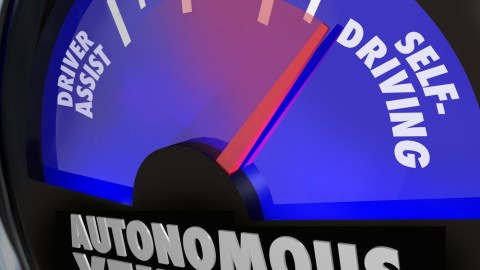How Older Drivers & All of Us Will Learn to Love Robotic Cars

Google’s self-driving car and the automobile industry’s related efforts are breathing life into the seven-plus decade dream of the automated highway, which was first introduced as a concept at the 1939 World’s Fair. Older adults, in particular, are likely to benefit directly from an automated future, as some make the transition from drivers to passengers in their own vehicles. However, computer software and sensors may not be the limiting factors holding back a future in which cars themselves drive Miss Daisy. Rather, the issue that will affect the speed of user adoption will be one of education: how well the new technologies are introduced and taught to consumers.
From the driver’s seat, the car has changed little over the course of decades. Only improvements in design, comfort and entertainment have touched the driver directly. However, as automobiles become more automated, dramatic and rapid changes in how to operate the vehicle will place new demands on the driver.
‘What’s new’ in car technology typically appears first in luxury automobiles. High-priced cars today are often also high-tech cars, and older buyers dominate the high end of the automotive market. In fact, the University of Michigan Transportation Research Institute reports that consumers between ages 55 and 64 years old are leading all new vehicle sales. And consider the following vehicle models and buyer average age as reported by 24/7 Wall Street’s review of IHS Automotive data:
Bentley (56.2 years old)
Bugatti (59.5)
Buick (60.3)
Cadillac (59.5)
Chrysler (54.7)
Jaguar (56.6)
Lexus (56.9)
Lincoln (61.0)
Mercedes-Benz (54.6)
Smart (55.3)
The popular myth of old age does not portray baby boomers and grandparents as lifestyle leaders in the new age of high-tech. However, on the road, they will be the lead adopters (or rejecters) of interim autonomous technologies that will serve as a bridge between the cars of today and the dream of robotic cars tomorrow.
Automated systems on highways and in showrooms today are the precursors to fully robotic vehicles. And the speed with which these technologies are being integrated into new automobiles is accelerating at an unprecedented rate. Collision warning systems, lane deviation detection alerts, vehicle-to-vehicle communications, blind spot detection, automatic braking, and automated cruise control are all elements of robotic dreams to come. However, automated systems do more than merely alert the operator to issues. They demand that the experienced driver drive differently, integrating new information into a deeply ingrained decision making process, replacing trusted driving habits developed over years and decades. Even young drivers develop their understanding or mental model of safe driving in less than ten years. Given the speed of innovation today, ten years may introduce three generations of change to in-vehicle technology systems. Suddenly, the term ‘older’ driver becomes relative.
Learning to trust and use these systems is a work in progress. Very little has been developed in terms of effective educational materials to instruct drivers of any age on how to use these in-vehicle technologies. How many people actually read their two-inch thick, eight-point font vehicle owner’s manual? While these systems are truly innovative, acceptance, safe use, and adoption cannot be assumed.
Remember the early years of anti-block brakes (ABS)? The failure of the industry to fully explain the benefits of these novel systems in the early 1970s led to dismal sales. For example, even though ABS cost less than an AM/FM tape player option in the high-end 1971 Chrysler Imperial, fewer than five percent of the Imperial buyers selected the new technology as an option. For those who did buy ABS, there was little warning explaining why use of ABS caused a loud ‘clunking’ sound. The pulsing of the ABS terrified drivers and convinced many to believe that the brakes were either failing or that something was about to fall off the vehicle. Beyond lost sales, the lack of comprehensive consumer education greatly slowed the deployment of a technology that saves lives.
It is unlikely that robot cars will simply appear on the roads. They will evolve. Before Miss Daisy (or her granddaughter) enjoys her dream of a robotic chauffeur, she will have to navigate years of transition from human-centered control to autonomous systems – how to drive on roads that may include a mix of robotic and human drivers, and how to maintain safety when an autonomous system fails due to technology or weather will become necessary to remain safe and mobile across the lifespan. Responding to the changing driver experience, AARP’s Driver Safety Program, the largest driver education program catering to the 50+, demonstrated leadership by recently revising its curriculum to include content on new vehicle technologies. The automobile and insurance industries, government, NGOs and driver testing authorities must collaborate to make advances in driver education with the same verve and velocity visible in the development of new sensors and software to help drivers learn how to use these systems effectively and safely.
MIT AgeLab’s Luke Yoquinto contributed to this article.
Image: Shutterstock/iQoncept





